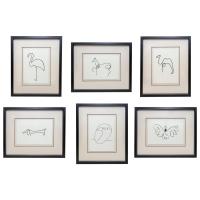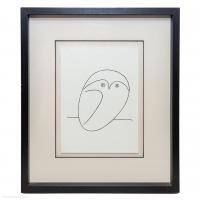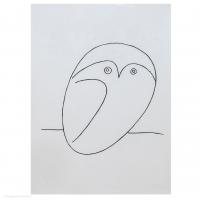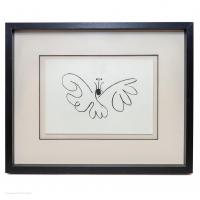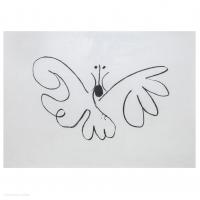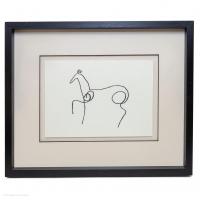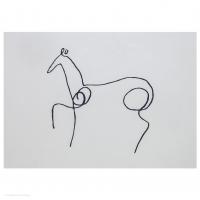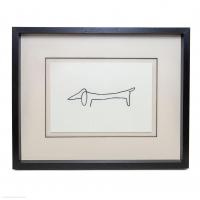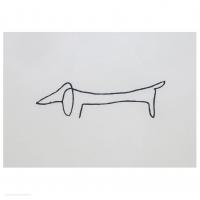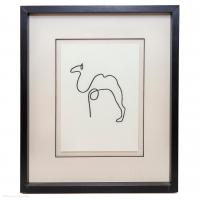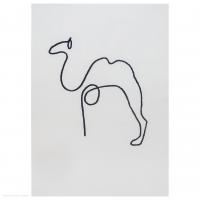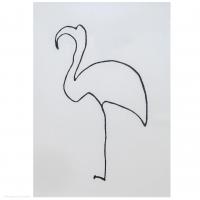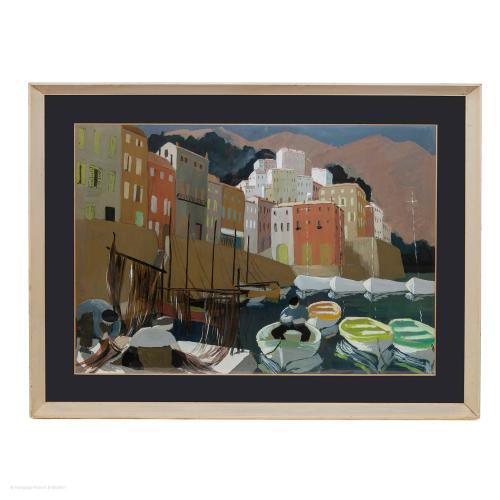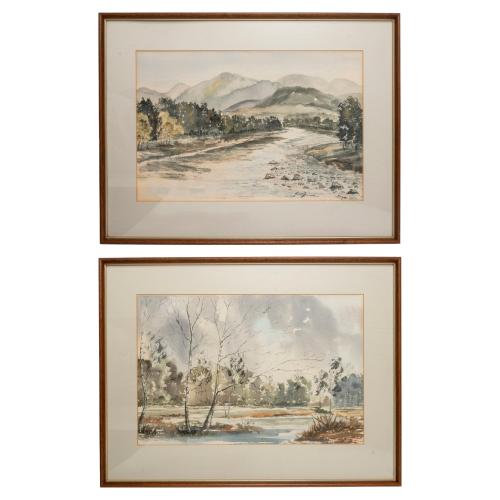
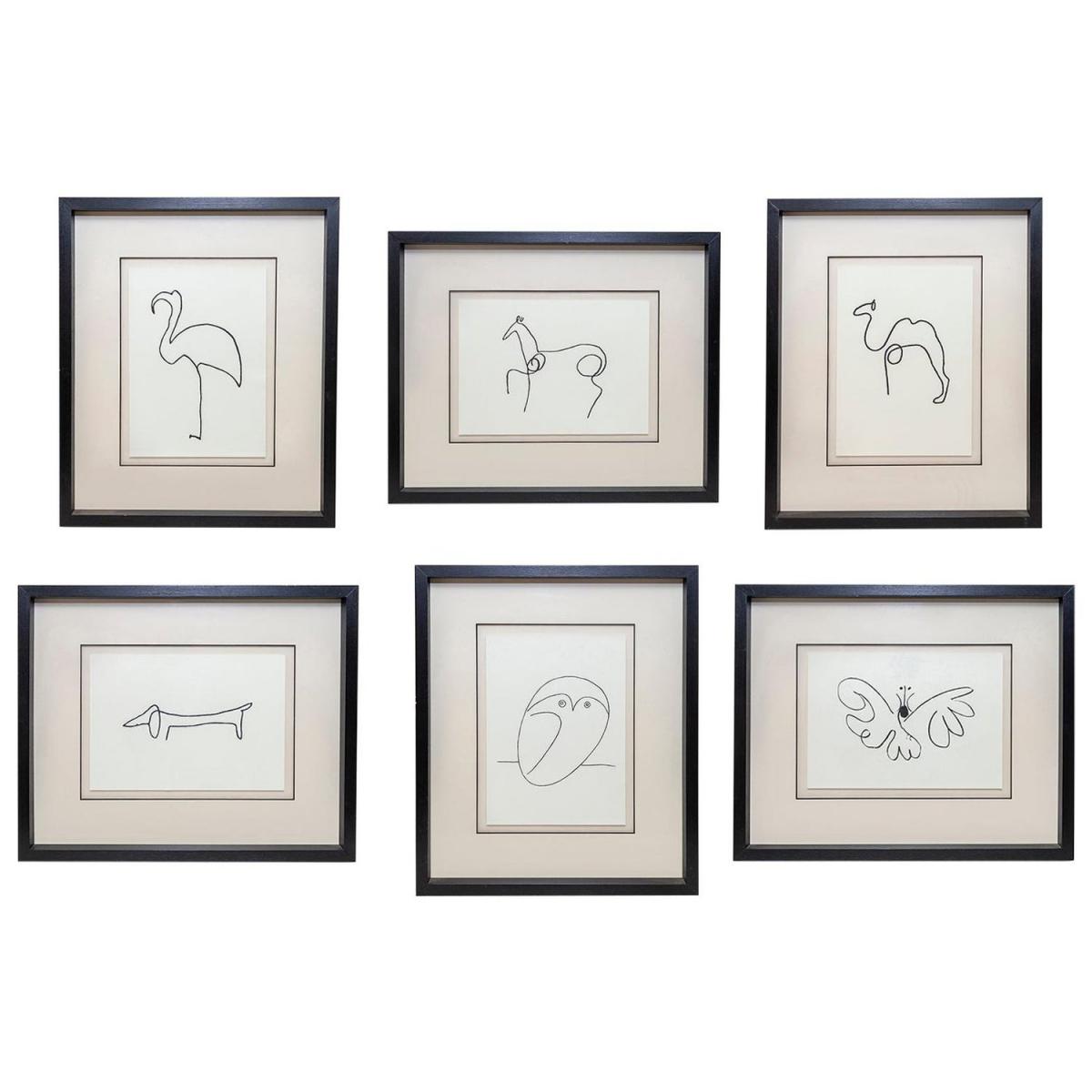

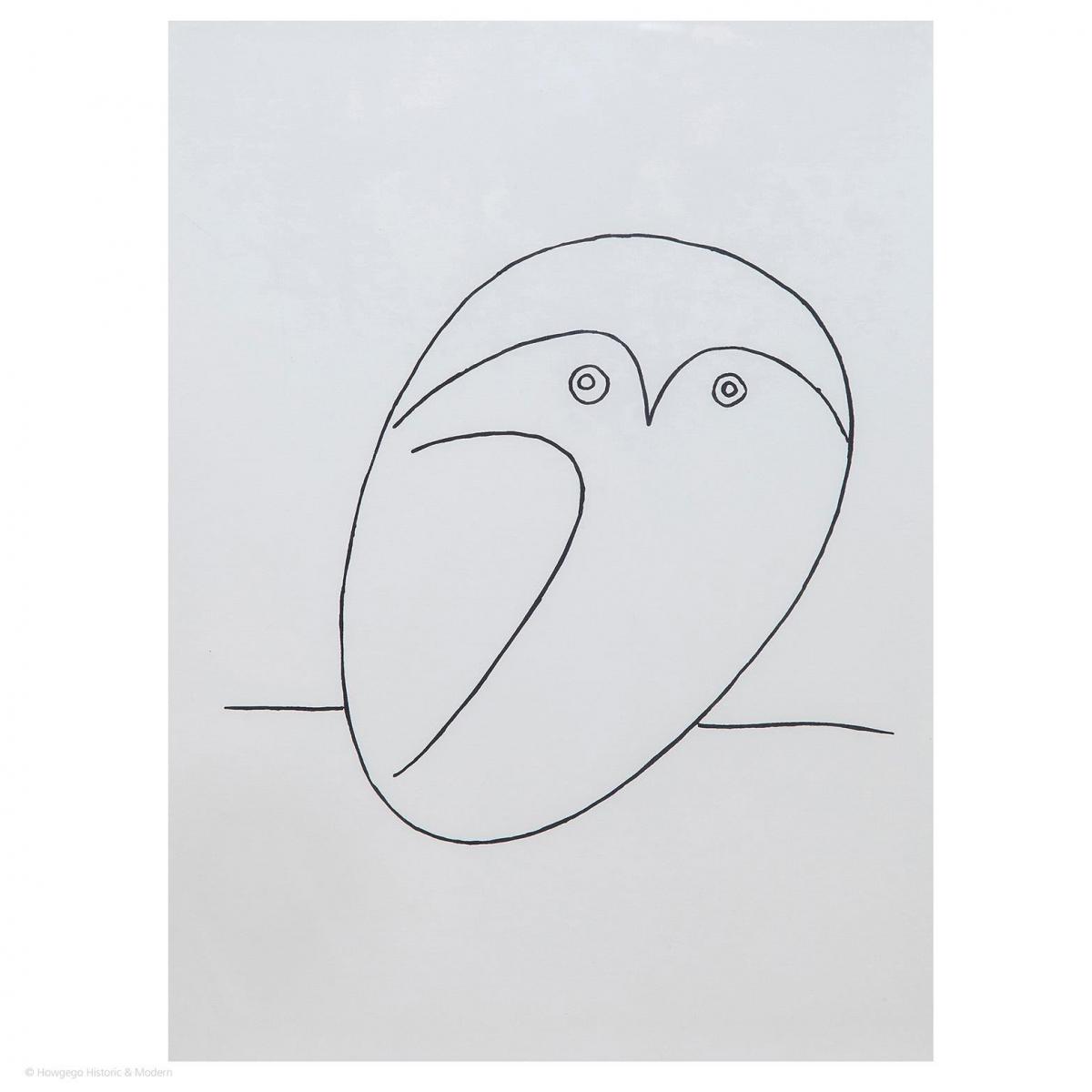

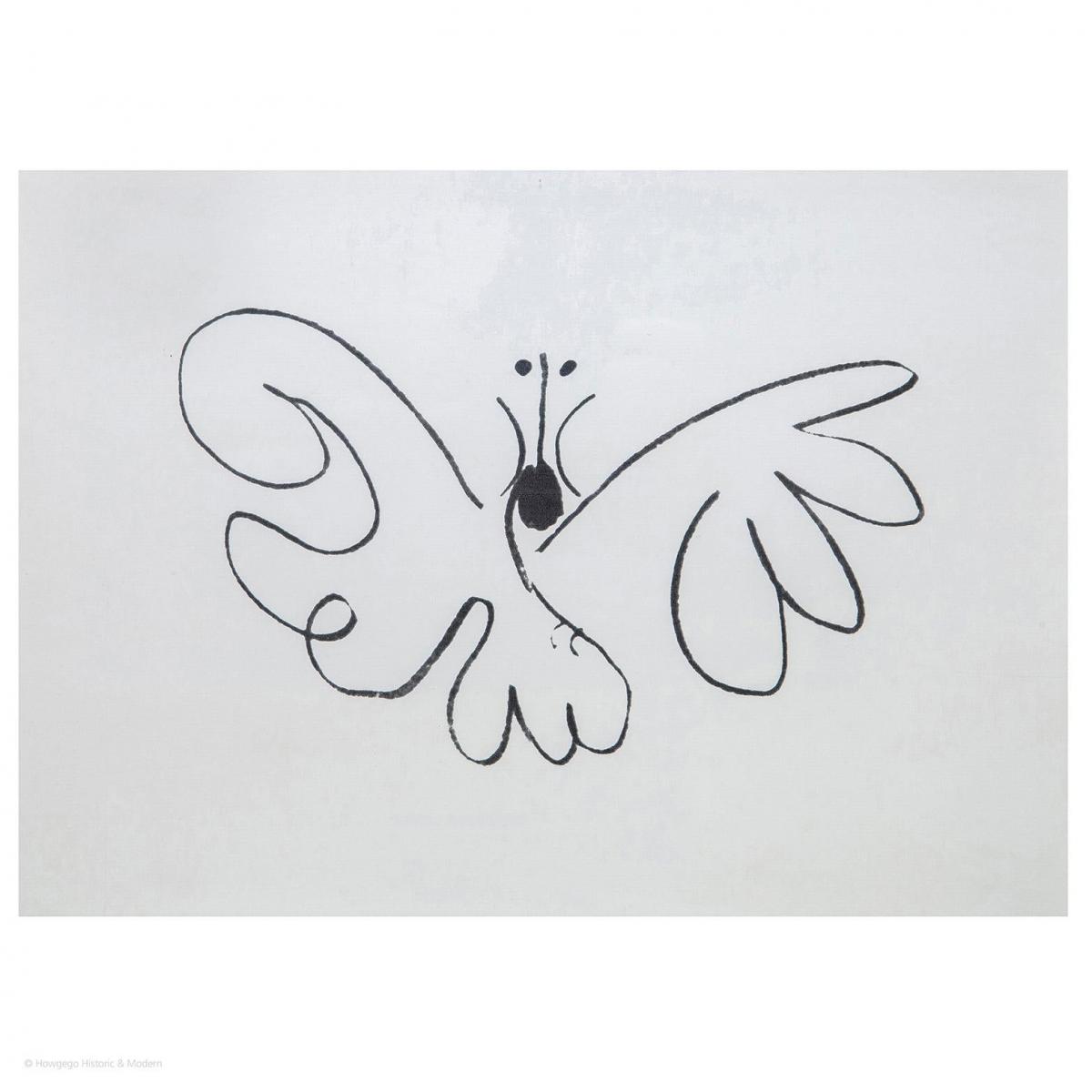
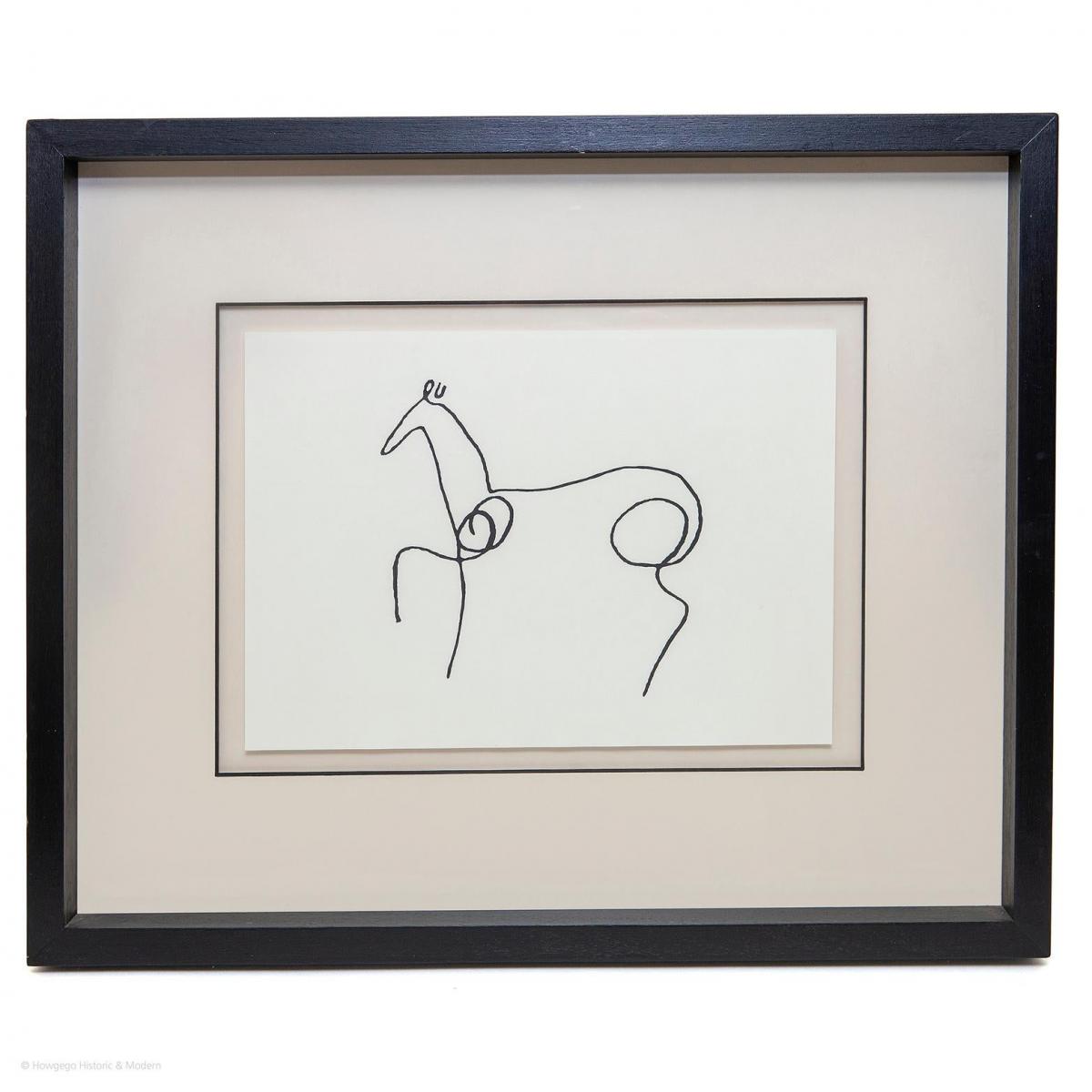
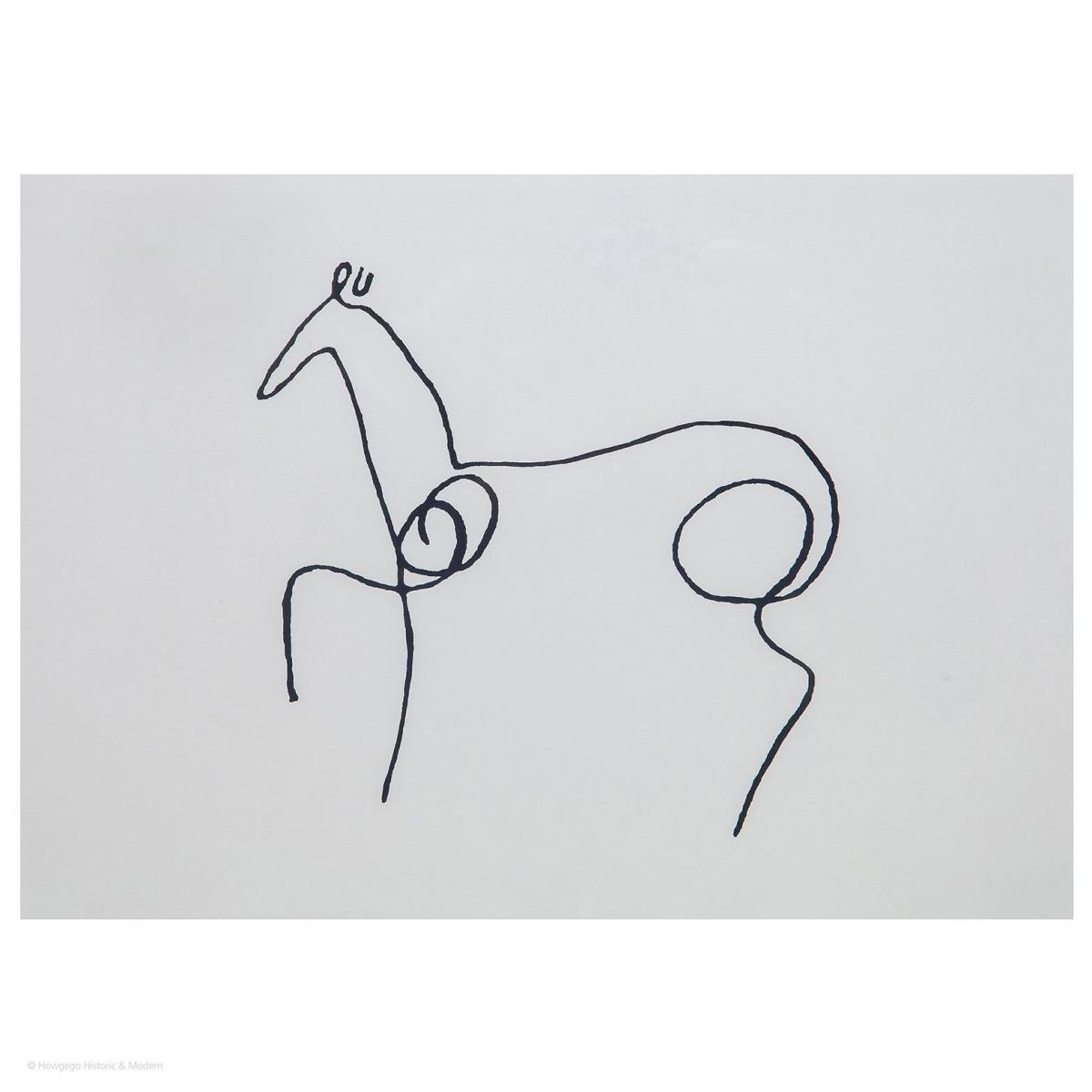
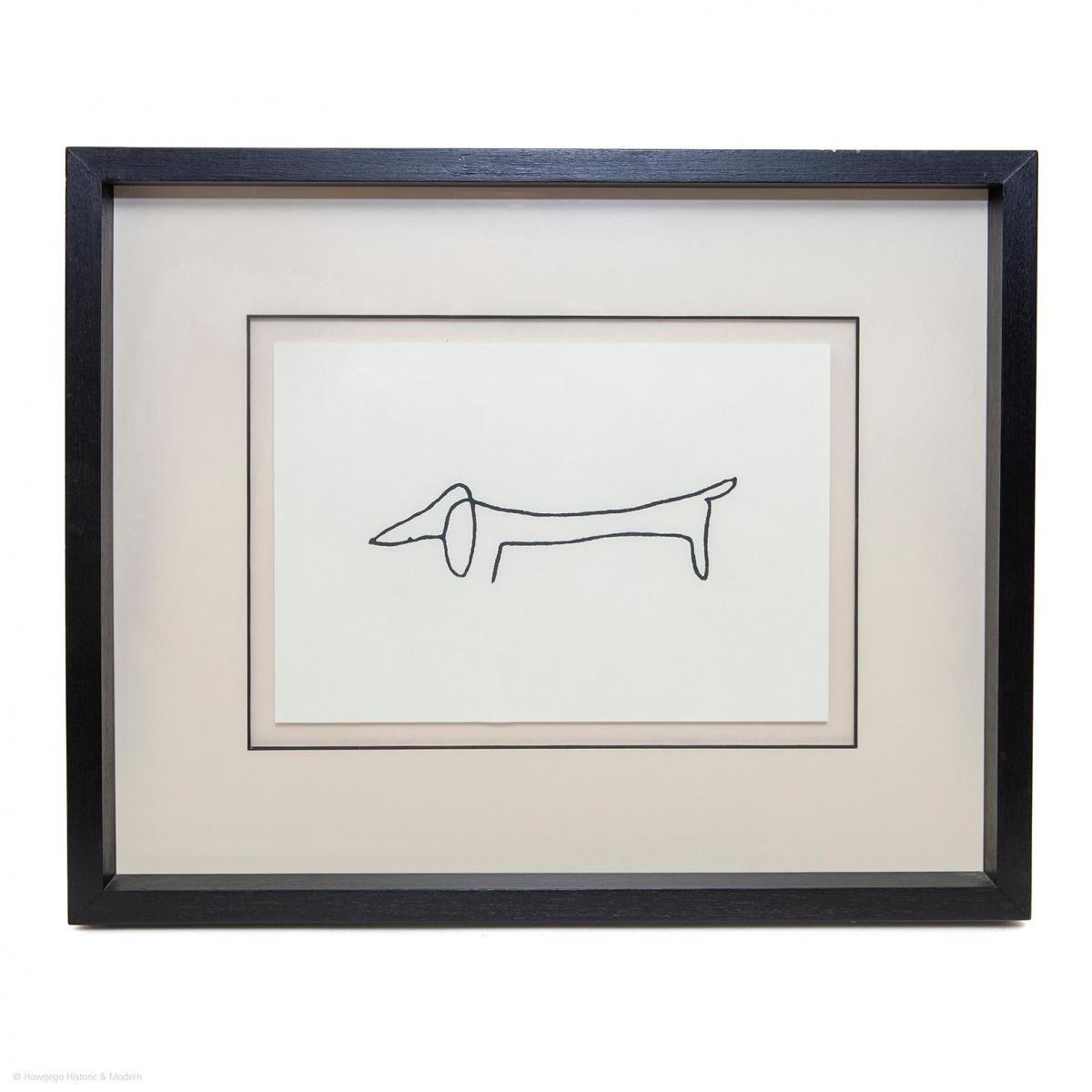
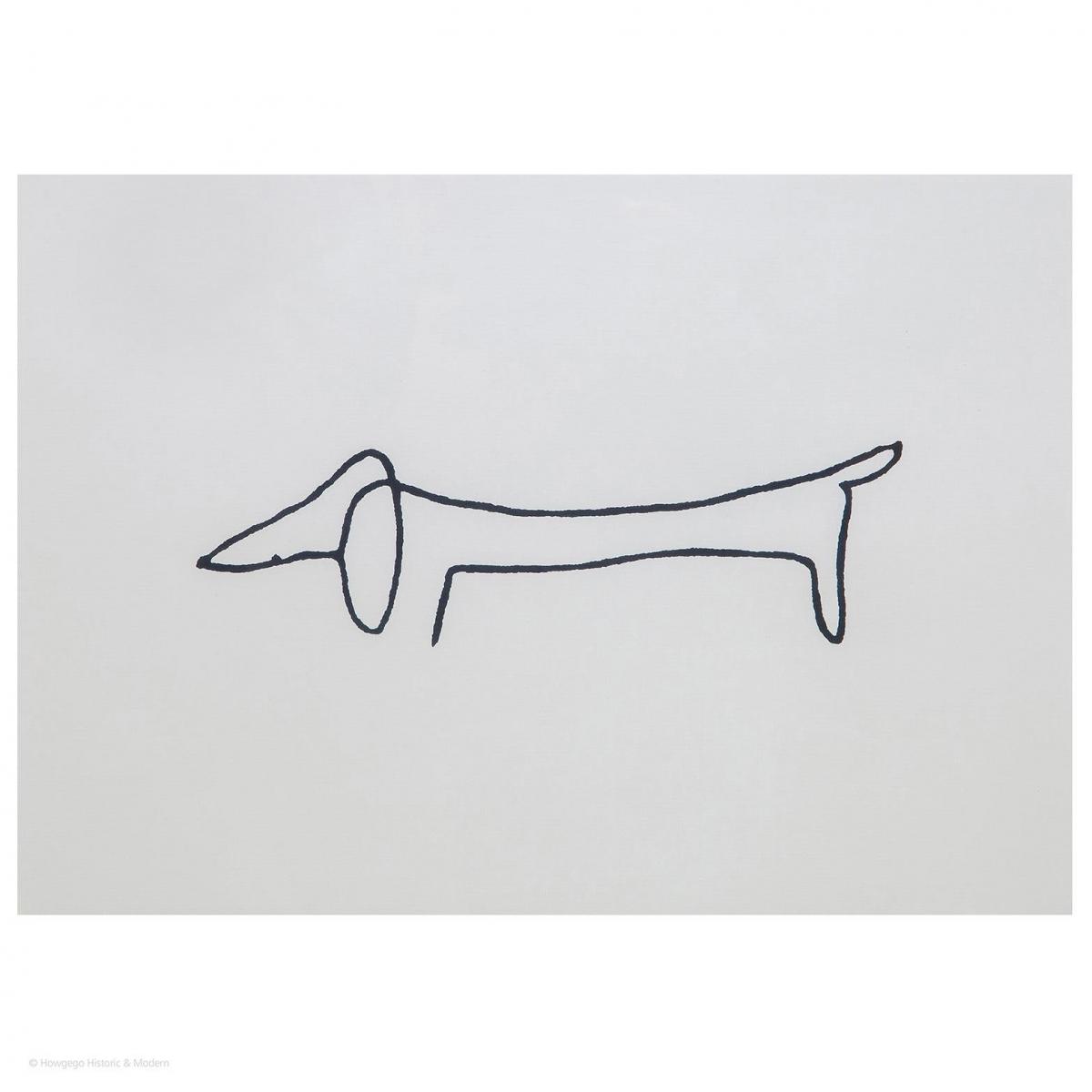
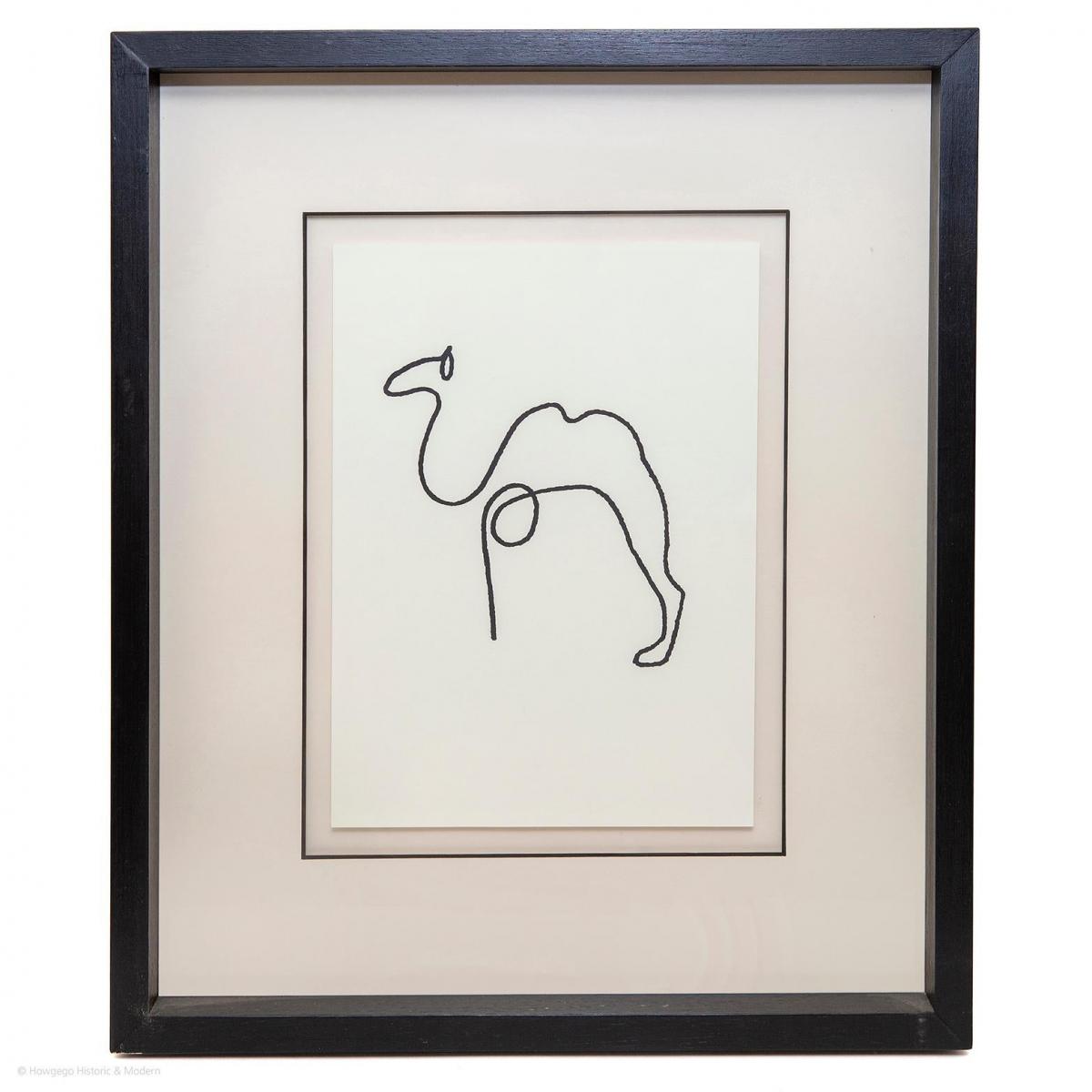
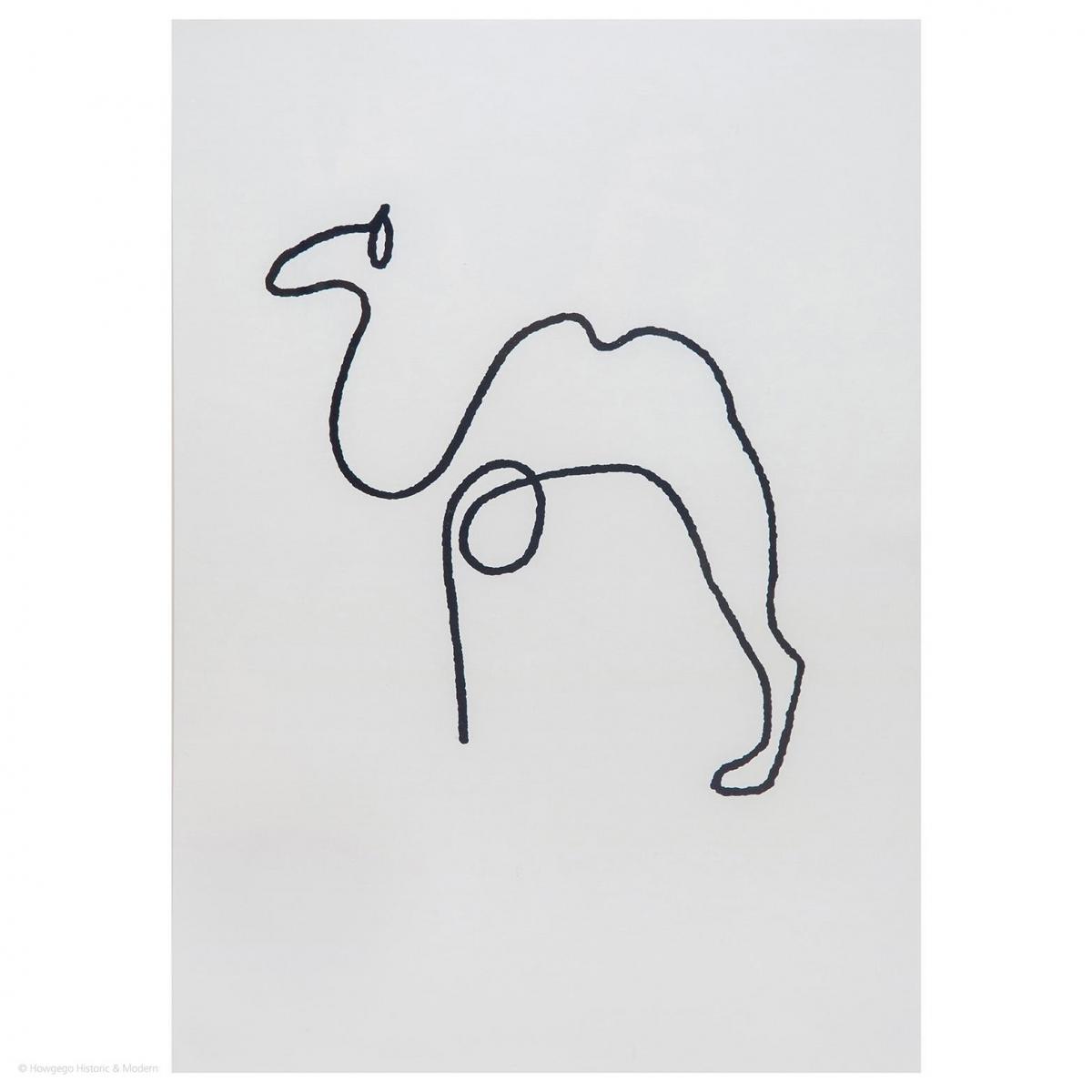
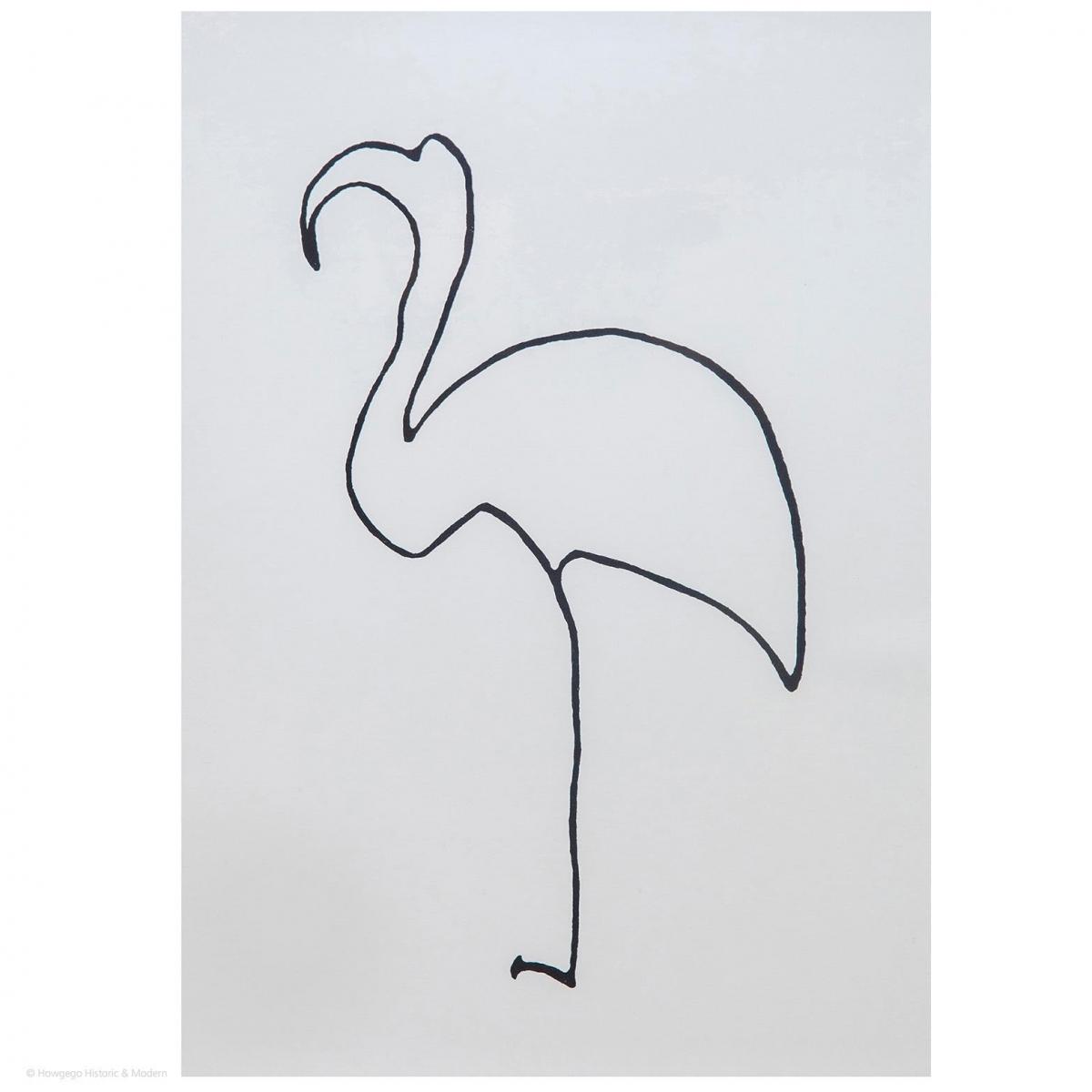
Price
£5400.00This object is eligible for a Certificate of BADA Provenance
The BADA Standard
- Since 1918, BADA has been the leading association for the antiques and fine art trade
- Members are elected for their knowledge, integrity and quality of stock
- Our clients are protected by BADA’s code of conduct
- Our dealers’ membership is reviewed and renewed annually
- Bada.org is a non-profit site: clients deal directly with members and they pay no hidden fees
This set of 6 Picasso line drawings is part of Picasso's range of "line art". Picasso's single line drawings were created later in his career, after the surrealism period. The single line pieces are from a collection of over fifty works in which his drawing implement was not lifted from the paper until the masterpiece was finished.
Picasso created his single line drawings using a variety of media, including pencil, pen, ink and brush. His single line drawing subjects included musicians, harlequins, nature and animals. Picasso was heavily influenced by the early 20th-century style of Primitive art in the creation of his line art.
These works mostly deal with animals and reflect his enduring love for animals and his pets which were often the subjects of his art, especially featuring in his line drawings. These images are hugely popular most likely due to the energy they exude. They Stand out for being so simple and yet they show a mastery of the Craft of drawing due to how expertly Picasso manages to use so view lines to convey the IDEA of the animal.
It truly reflects Picasso's skill that he was able to create these animals in an almost life-like manner using only a few short, simple lines. Line drawings played an important part in paving the way for Picasso's cubist period, by allowing him to practice and develop his ideas before committing himself to canvas.
Their simplicity of form strips away all distraction, leaving his natural ability at its most visible. An unbroken line was quickly executed with a light touch that actually served to increase its power. The fact that the discipline also proved ideal for experimentation, at any time and anywhere, allowed Picasso to play with these ideas throughout his life, producing sketches of animals, portraits, myths and objects.
His many pets gave him plenty of opportunity to observe the way animals move and hold themselves, with his dog Lump being a favourite with artist and admirers alike. Picasso's pets included owls, several dogs and a goat as well as a flock of doves plus other creatures with more fleeting appearances in his life.
Pencil sketches feel supremely contemporary and suit that style of home perfectly, with many people today designing interiors that have just a few carefully chosen items, with plenty of space around the room to help everything breathe. They are a serigraph artworks, which means that they are a silk screen print using ink onto a piece of heavy weight paper.
Firstly, the artist paints or draws onto the mesh of the silk screen, and then they press a substrate (in this case, thick paper) onto the screen to create a clean, clear impression. Though it might seem at first sight to be just a simple squiggle, looking at it more closely demonstrates that this is unmistakeably a work by Picasso.
Owl PLD01 - Owl sketch is one of the many works produced by Picasso which concerns owls. Owls occur again and again in Picasso's work. This sketch is a line drawing produced by Picasso. It is extraordinarily simple but is, in my opinion, charming in its simplicity. Owls can be found throughout Picasso's career, in all manner of styles and mediums. His Owl ceramics were particularly charming, with the spout of the item being used as the bird's beak.
Picasso is known to have taken in several animals through a variety of means, sometimes taking on friends' own pets, whilst in other cases finding stray birds and animals which were in need of care and attention. An owl was one such creature who Pablo helped to restore to it's best health and this helped to impart a general love of owls on him. This love for owls seems to have been influenced by his love for classical themes.
The owl possibly (with this context in mind) represents wisdom and intelligence. It is worth noting also that in the area where Picasso spent much of his later life the owl had been the traditional symbol of the tribe that had once inhabited the area. He at one point even owned an owl as a pet, in fact, one friend tells a story of how “While Pablo was still working at the Musée d’Antibes in 1946, the photographer Michel Sima had come to us one day with a little owl he had found in a corner of the museum.
One of his claws had been injured. We bandaged it and it gradually healed. We bought a cage for him and when we returned to Paris we brought him back with us and put him in the kitchen with the Canaries, the pigeons and the turtledoves. He smelt awful and ate nothing but mice." It is worth noting that most of Pablos works concerning owls are ceramic in nature.
Butterfly BLD01. Pablo Picasso's The Butterfly also known as Le Papillon is a simplistic yet striking drawing of a butterfly. It is one one of Picasso’s most iconic drawings because it only uses a continual line. Picasso's single line drawings were created later in his career, after the surrealism period.
The single line pieces are from a collection of over fifty works in which his drawing implement was not lifted from the bold, continual line in The Butterfly signifies freedom, it's almost as if the butterfly will flap it's wings and fly right off the paper. The single line style of the butterfly denotes nature stripped back to it's essence. The Minimalist colours and style of The Butterfly seems to be well ahead of it's time and has a very contemporary and modern feel.
Horse PLD06. This is by no means the only work of art that Picasso created that involved a horse. Indeed, he seems to have been fascinated by these animals. Famously, a silently screaming horse features in his epic pacifist art work 'Guernica', for instance, and an early (1906) study entitled 'Boy Leading a Horse' depicts a peaceful scene involving a naked boy and a grey horse towering to his side.
Picasso's painting 'Bullfight', moreover, focuses less on the eponymous bull and more on the horse. This horse, stamping the ground in what could be fury or distress, has unseaed its rider and may be said to be one of the victims of the fight. Though throughout his oeuvre Picasso tends to depict horses in moments of extreme or overwhelming pain or emotion, his calmer studies can often be jauty or jovial. This drawing of a horse is a prime example of this: a skilled artist demonstrating his skill and showing his love of the equine form with a few minimal lines.
Dog PLD05. Dog was a Dachsund called Lump whom artist Picasso captured in several drawings. Picasso tended to use a light touch and simple lines when depicting animals by themselves and Lump was an obvious choice as a subject because of how the artist loved this animal. The dog featured in several paintings and sketches. La Californie was the significant moment in the artist's life that he built his relationships with both Lump and also Jacqueline. It was in this villa in Cannes that he was to truly feel comfortable and contented.
When Lump first arrived at the villa he would excitedly sniff and search around every room in this large home. On his first day here he would even be captured on a ceramic artwork by an enthusiastic Picasso, eager to see him settle into this new location. Photographer David Douglas Duncan was the owner of Lump and he was to allow Pablo to take care of it after visiting the artist in his Cannes mansion, La Californie, April 1957. As a reward for bringing this charming animal into his life, Picasso awarded Duncan this ceramic plate to remember the dog that he had so generously given the artist. Pablo himself was generous frequently, but normally in a spontaneous capacity, such was his artistic makeup.
Camel PLD04. The genius of Picasso enabled him to produce a charming, highly recognisable camel with just a single pencil line. This informal sketch has become one of the artist's most respected and much loved animal drawings. Camel appears to simply be a sketch of an animal, with no real meaning behind it. The artist may have been purely exercising his artistic mind during a spare moment.
Picasso produced Various Animals in 1907. It was part of a sketchbook which featured pencil, pen and ink artwork. On one of those pages you will find a selection of camels, birds and insects. The artist was clearly practicing these elements in preparation for either a future work, or perhaps purely for his own amusement. The sketchbook was a collections of drawings for Apollinaire's Bestiary. There were a total of nine pages devoted to animals.
Flamingo PLD03. One continuous line of chalk or pencil could convey shape, form and characteristics, and this is especially true of the Flamingo drawing, which lends itself naturally to a single-line drawing. Picasso could have seen flocks of these striking pink birds in a Paris Zoo or perhaps in the Camargue region of Southern France. They often Stand on one leg, and here the subject balances effortlessly. More detailed outlines often became etchings, many of which are now housed in New York's Museum of Modern Art.
However, the sheer numbers created by the artist mean that these bold depictions are represented in institutions worldwide, making them accessible to the widest audience possible. The unbroken lines are deceptively simple, because of course, to portray something accurately with one quick flourish is actually very difficult. It's said that the infant Pablo could draw before he could speak, thanks to his artistic father.
The son went on to change the face of modern art, co-founding the Cubist movement with Georges Braque, passing through both Blue and Rose periods, and exploring primitivism and surrealism. His art was revolutionary and yet he retained the ability to strike a chord with the most unsophisticated viewer.
The prints are free-floated. The ivory mounts with a hand painted black bevel. In black wooden frames.
Purchased from a collector who reputedly acquired them in the 1980s. They do not bear any limited edition numbers or stamps.
Measures: Horizontal frame: 58.5cm x 48.5cm
Horizontal print: 34.5cm x 24.5cm
Vertical frame: 48.5cm x 58.5cm
Vertical print: 24.5cm x 34.5cm.
The BADA Standard
- Since 1918, BADA has been the leading association for the antiques and fine art trade
- Members are elected for their knowledge, integrity and quality of stock
- Our clients are protected by BADA’s code of conduct
- Our dealers’ membership is reviewed and renewed annually
- Bada.org is a non-profit site: clients deal directly with members and they pay no hidden fees


